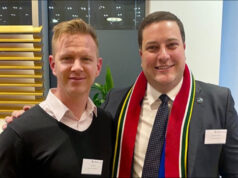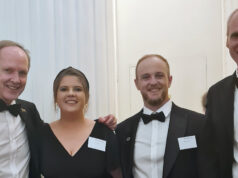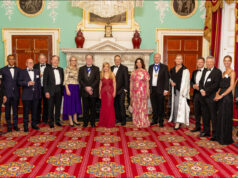We live in an era of increasingly intelligent, exponential tech, where we can source endless updates, information, and history. As such, many will know the history behind South Africa’s Women’s Day, recognised on 9 August, each year.
Imagine the logistics, without today’s technology and communications, to gather more than 20,000 women, of all cultures and races, to march together. This was the feat achieved on 9 August, 1956, during the height of the apartheid regime. Around 20,000 women made their way in perfect order, to the Union Buildings.
The women’s cause was clear – to protest against the extended pass laws for women.
FEDSAW (Federation of South African Women), who arranged the march, were driven by an avant-garde vision: “to strengthen the voices and influence of women from all ethnicities in the movement towards a democratic society.”
Their silent, powerful protest solidified its impact when these 20,000 women started singing “Wathint’ Abafazi, Wathint’imbokodo,” which translates to “Strike a woman, strike a rock.” This phrase is adapted: “Now you have struck a woman, you have struck a rock.”
Visionaries ahead of their time understood that women are the very foundation upon which families, societies and businesses are built. They create environments where their families can prosper. They work in teams and collaborate driving better decision making. They deploy empathy to support and drive the right outcomes. They find common ground, rather than confrontation, and provide for the future to create sustainability.
This historical context proves significant as it contextualises the tremendous strides women in South Africa have made to be where they are today, in a relatively short period of time.
Yet still, like many women globally, South African women face continual suffering. They continue to champion against extraordinarily high levels of gender-based violence. Additionally, they meet institutionalised racism, patriarchy and oppression, and various degrees of discrimination which, for all the efforts from business, still exist.
Newsroom highlights that while female entrepreneurs are progressing in South Africa, critical challenges still exist that need to be uprooted. Mastercard Index of Women Entrepreneurs Index (MIWE) reveals that while South Africa’s ranking on advancement in business has improved, women still only account for 21.9% of local business owners.
As released by Sage, the major challenges women face include:
- Gender bias. With the professional and business sectors being so largely male-dominated, bias against women remains prevalent. The “motherhood penalty” is one such bias. Consciously or unconsciously, in South Africa, career progress is hindered because many women are mothers and have consequential priorities – incorrectly, more than their male counterparts.
- Access to finance. The archaic norms of male dominance in the family and business, means women were often second-class citizens. This problem has played out in many societies and countries. This means that to this day, most women today still don’t own property. As a result, they have no collateral when trying to access funding. Ironically, the findings revealed by Sage demonstrate that women are better at managing finances: “Studies show that women manage credit better than men, and when invested in, women achieve a 27% credit turnover, compared to 8% in businesses run by men.”
The other significant issues include a lack of role models, education and training. Yet, women’s involvement, against these odds, has proved to have been successful for many. Black women inter alia fly commercial aeroplanes, run corporations, lead in politics and drive the micro business economy.
As cited in News24: “More women-run businesses will be the tonic South Africa desperately needs because greater economic participation by women stimulates economies, reduces poverty and creates jobs.”
According to research by Development Economics, women-owned businesses, established through 2018 and 2019 in South Africa, generated about R175 billion a year and created close to 1 million jobs. This article also states, “The World Bank also reports that women are critical for job creation.”
One needs to spend time in more informal and rural settlements to observe the thousands of resourceful South African women who sell fruit and vegetables, snacks, food, second-hand clothing, and more, to create some form of income.
Fortunately, there are leaders who recognise women’s fundamental value in business sectors. The theme for South Africa’s Women’s Month, ‘Women’s Socio-Economic Rights and Empowerment: Building Back Better for Women’s Resilience!’ speaks to the importance of empowering women even further.
At the South African Chamber, we take gender and all other diversities seriously. Our Board and Executive exceed current minimum levels with 36% and 49% women representation. The SA Chamber is led and chaired by a woman, Sharon Constancon, who states. “We celebrate the women “taking up space” (as former Miss South Africa Zozibini Tunzi encouraged us to) and thank the trailblazers carving paths for more women to follow.” Sharon, who has championed female education notes, “At the SA Chamber, we celebrate all leaders who ensure women take their rightful place in business.”
The SA Chamber, through the year, champions new female business entrepreneurs, women who lead on amazing charitable endeavours, and women who create jobs and deliver education.










